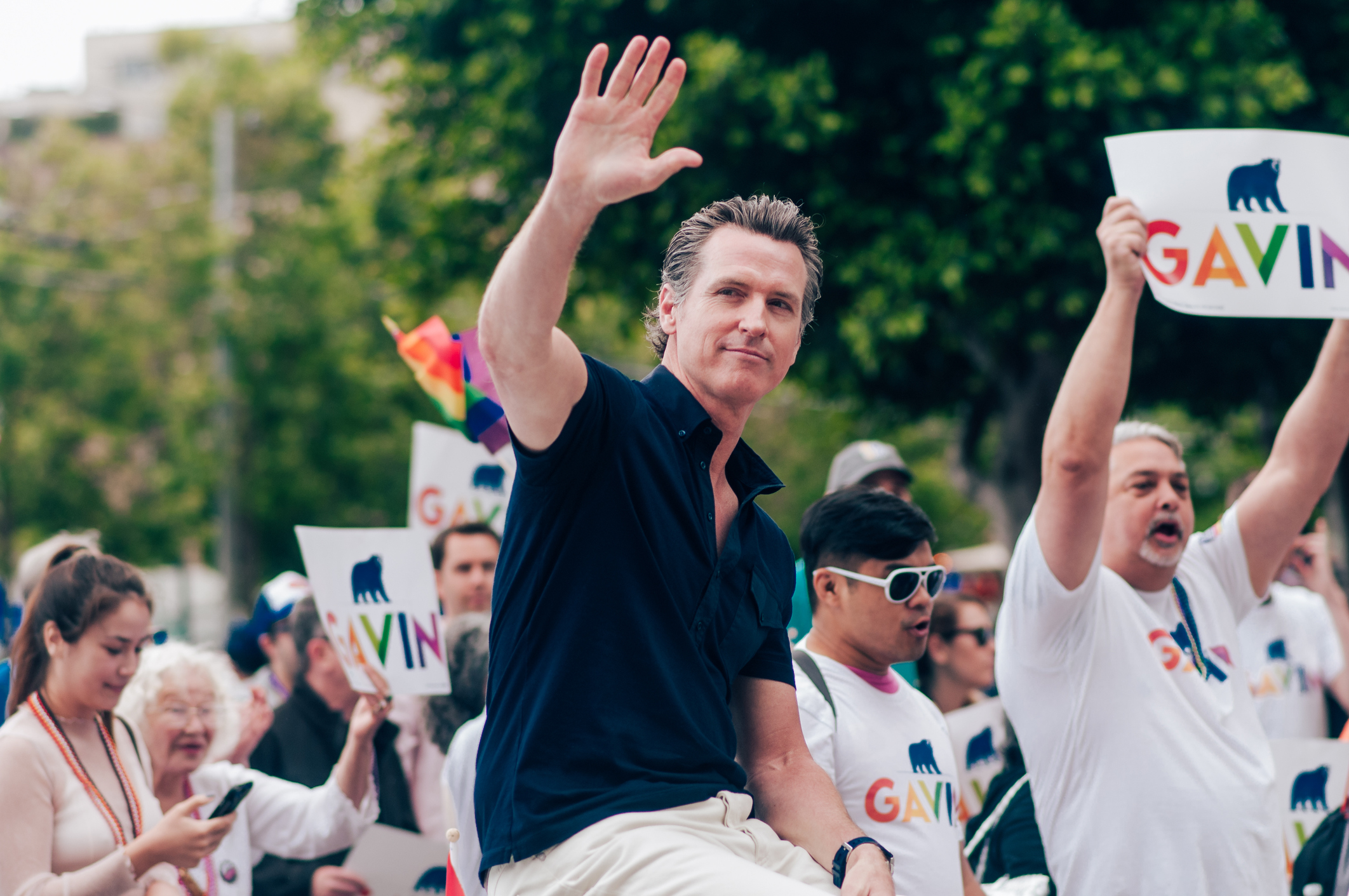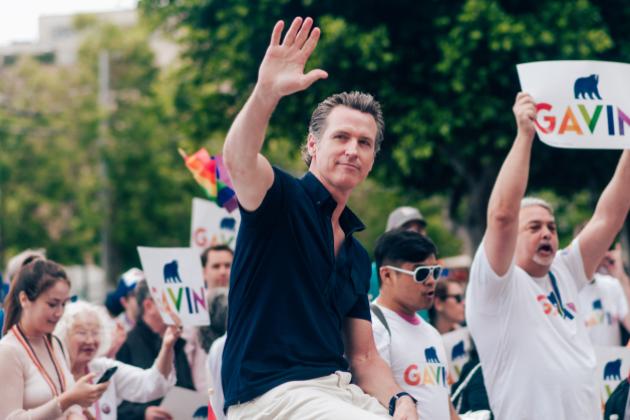- Health Care
- Politics, Institutions, and Public Opinion
- State & Local
- California
Maybe you dressed in green, imbibed Guinness, and feasted on corned beef and cabbage at some point in the past few days. Otherwise Erin Go Bragh was “Erin go bust” in California, what with a raft of St. Patrick’s Day celebrations canceled and bars closed statewide.
So much for “the luck of the Irish” in the midst of a global pandemic.
Speaking of luck, there’s a question of how much of it that Gov. Gavin Newsom enjoys these days.
Yes, Newsom breezed into office in January 1999 after a record 7.72 million voters afforded him the honor of becoming California’s 40th governor. Given a strong economy, opposition Republicans in perpetual disarray, and a convenient foil in the nation’s capital in the form of President Trump, the temptation might be to rename Sacramento’s Capitol Mall “Easy Street” in honor of Newsom’s political four-leaf clover.
But perception is one thing and reality another.
The “highlight” of Newsom’s first year in office was, arguably, a lowlight: wildfires that devasted parts of Northern and Southern California, compelled the state’s main electricity provider, Pacific Gas & Electric, to cut power to millions of customers, and prompted the governor to declare a state of emergency.
Two weeks ago, Newsom declared another state of emergency—this time to help brace his state for a broader spread of the COVID-19 pandemic. That was followed by an executive order that allows state officials to commandeer hotels and medical facilities, which came only hours after the governor called for the cancellation of gatherings of 250 or more people in California through the month’s end. (State public officials said small gatherings can continue if it’s possible for attendees to remain at least six feet apart.)
Newsom isn’t the first California governor to stare social disruption in the face. In the summer of 2000, then governor Gray Davis faced the challenge of “rolling blackouts”—California’s largest planned blackouts since the end of World War II—courtesy of a low supply of available electricity.
Neither is Newsom the first rookie California governor trying to catch a break. To the extent that this is a competition, the title of “unluckiest first-term governor” still belongs to Pete Wilson, California’s chief executive from 1991 through 1999.
What Wilson endured in his first four years in office: a cold snap that mostly destroyed California’s navel orange crop; at the time, the largest wildland-urban interface fire in the San Francisco Bay Area (at its height, the October 1991 Oakland Hills fire involved 1,500 firefighters and 450 engines from all over Northern California); two floods in Ventura County, the latter the result of a series of storms that produced up to 40 inches of rain over much of Southern California’s coastal and mountain areas; and last, but certainly not least, the January 1994 Northridge earthquake that killed 58 people, destroyed more than 82,000 buildings across four counties, damaged portions of the Santa Monica Freeway, and sparked 466 fires (as natural gas mains and valves erupted)—in the process, saddling California with over $20 billion in damages.
As if that weren’t enough misery for one governor and one term, Wilson also had to contend with the fiscal ramifications of what was, before this century’s Great Recession, California’s worst economy since the end of World War II.
How bad was California’s budgetary outlook in the early 1990s? Wilson’s first year in office saw a Republican governor and a Democratic state legislature trying to solve a $14 billion hole in a $43 billion budget. To illustrate the gravity of the situation, Wilson pointed out that he could close California’s two main public university systems, empty all state prisons, close all state parks, and furlough the entire state work force—and yet a budget shortfall would still remain.
Blame it on bad timing, with the end of the Cold War decimating California’s aerospace sector (from the mid-1980s to the mid-1990s, roughly 175,000 aerospace-related workers lost their jobs—a population that by itself would rank among the top 30 California cities today).
But also blame the budget woes on a bill coming due. In the five years before Wilson took office, prison spending grew by 200%, Medi-Cal (California’s Medicaid healthcare program) by 120%, welfare by 115%, and public education by 70%. Meanwhile, California’s general tax revenues—what’s needed to cover the costs of the extra spending—grew by just 60%.
Time will tell if Newsom’s first term is as Wilsonian in terms of natural disasters. There has been no major earthquake; any biblical scholar will tell you that California is far shy of the 10 plagues that struck Egypt.
However, the next few months and the coronavirus’s lingering effect on California’s economy will test whether Newsom is so lucky as to avoid some painful budget decisions this year and next.
The modern California economy rests of pillars of tech, trade, and tourism. How does the pandemic affect that arrangement?
California’s tourism economy is an annual $145 billion undertaking (roughly equal to the GDP of Hungary). Last year, Chinese visitors pumped about $4 billion into the state’s economy. For 2020, the expectation was a 3% growth in Chinese tourism. Instead, California’s now bracing for a 28% decline.
As for California’s tech sector, look no further than the stock market. The glass-half-full argument: there’s a buying opportunity for stocks related to cloud-computing, cybersecurity, and 5G. Still, at one point last week, the stock market sell-off erased $6 trillion in wealth.
And that leads to another headache for California: the present crisis’s impact on capital gains.
The dirty secret behind California budgeting: an over-reliance on revenue from the top 1% of state earners, whose income stems mostly from capital gains (in California, capital gains are taxed the same as income).
In bull markets, record highs mean flush times in the state’s coffers, i.e., California’s current $21 billion surplus for the budget year ending this July. But as the pandemic grows, the state is falling behind the fiscal curve and missing its revenue projections. (Look for an update next month on California’s personal-income-tax collection, assuming the Trump administration doesn’t delay the April 15 tax deadline, followed by an updated version of the budget proposal that Newsom released in January).
Where does this leave California’s governor? For now, more of the same: more executive orders, staying on terms more cordial than usual with the Trump administration, more executive action, and more daily press briefings updating state efforts on dealing with the pandemic (Newsom’s hands-on approach and high public profile show he’s learned from Davis, who struggled to show he was in control of his crisis moment).
Otherwise, a California governor once proclaimed to be “the next rising Irish star in US politics” is at the mercy of his own executive skills, Californians acting sensibly, and some old-fashioned luck.
















